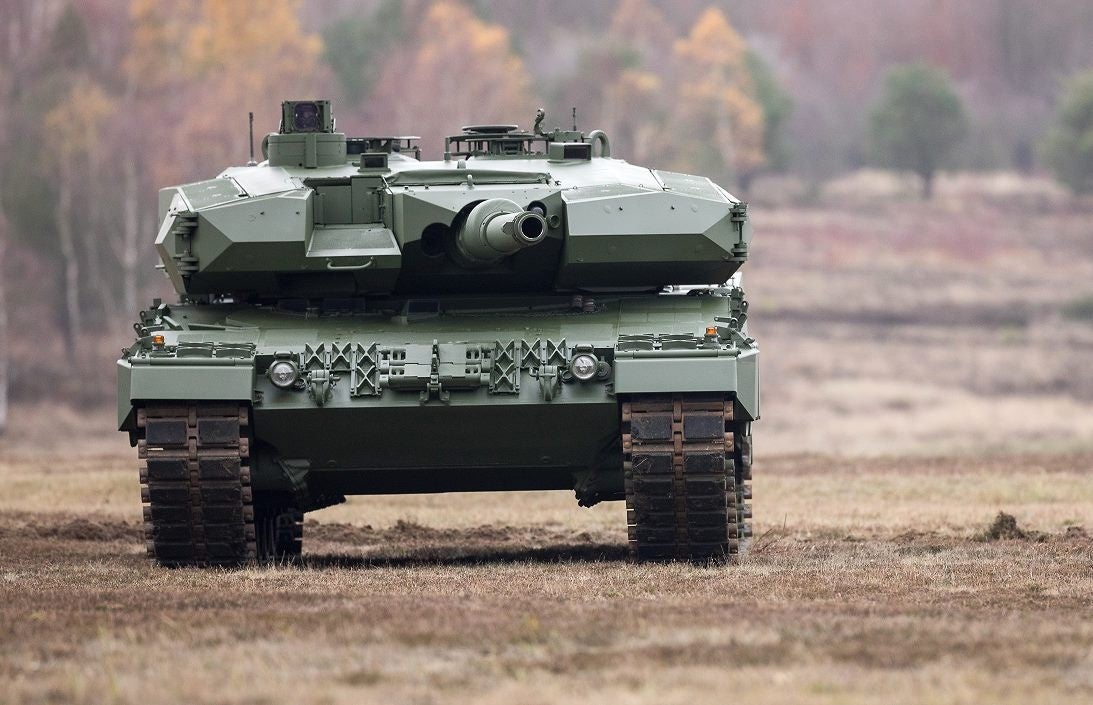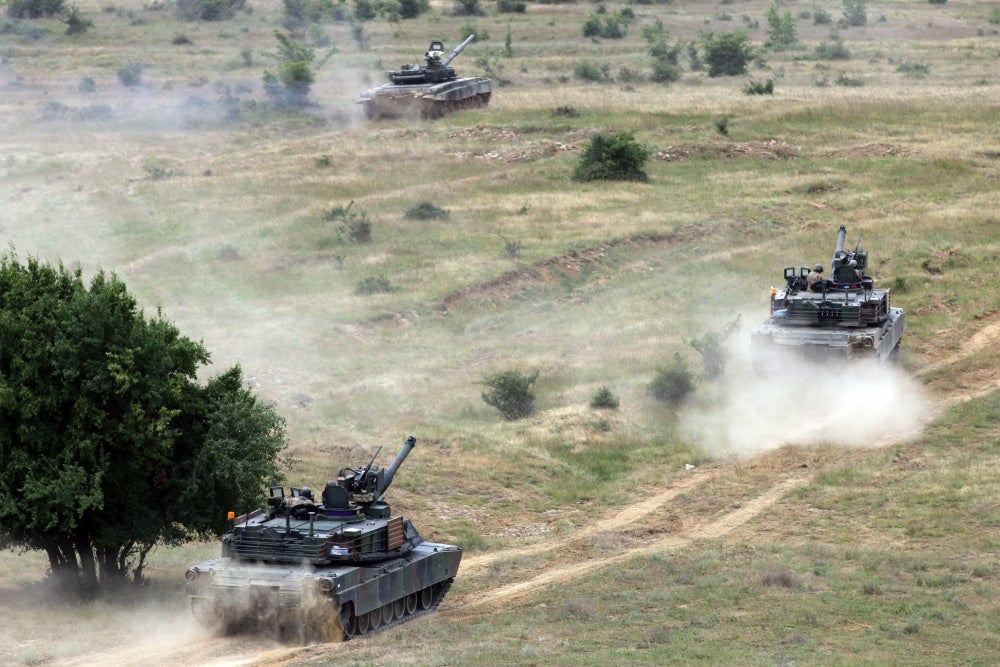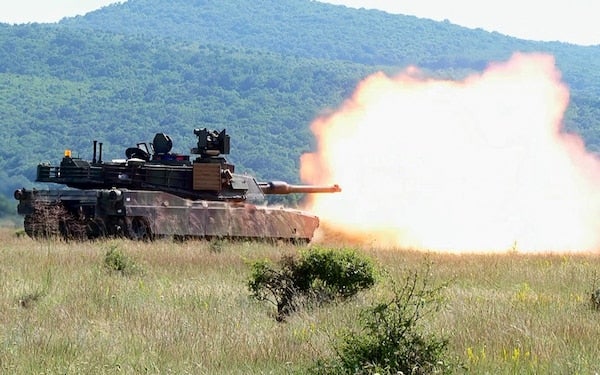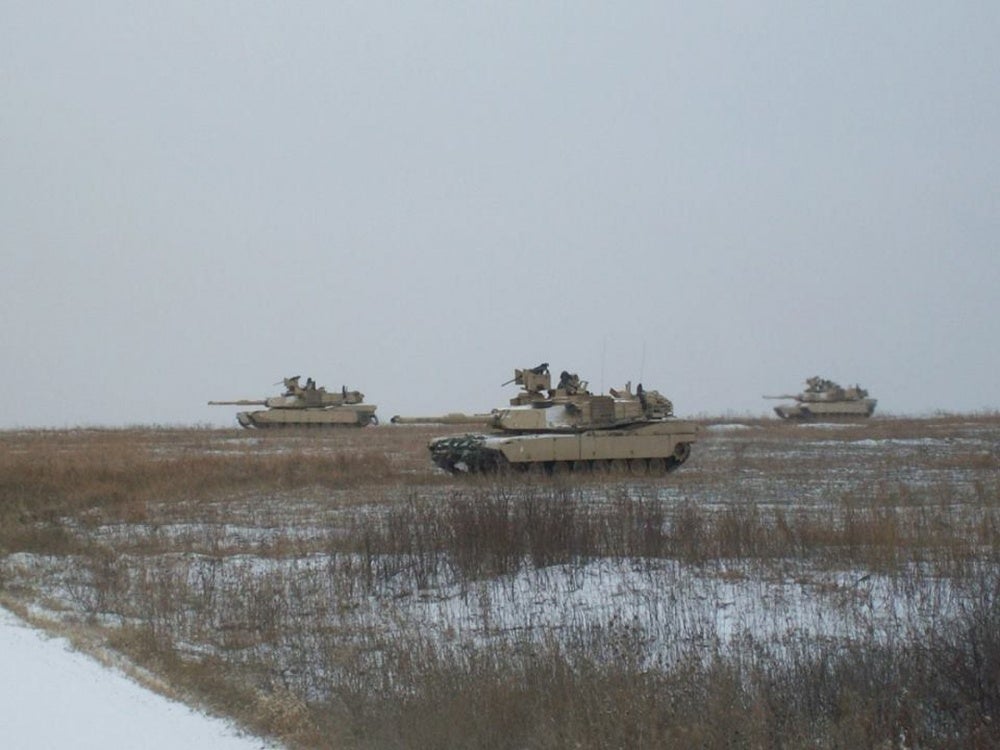Is the Abrams The Future of Poland’s Tank Force?
During a press conference at the 1st Armored Brigade’s base, the Minister of National Defense, Mariusz Blaszczak confirmed the procurement of the newest M1A2 SEPv3 for the Polish Armed Forces. The Polish Main Battle Tank (MBT) purchase is a subject that could be pretty easily turned into a saga complete with political schemes, international contracts, huge hopes, and tons of gossip.
The press conference confirmed that the tanks will equip the 1st Armored Brigade and the recently formed 19th Mechanized Brigade in Lublin. Both of the units belong to the 18th Mechanized “Iron” Division created back in 2018. The procurement program includes the tanks themselves, recovery and logistic vehicles, training provision, and ammunition. Poland will purchase 4 battalions worth of M1A2 SEPv3s for 23.3 billion PLN, which is equal to around $6.15 billion. Blaszczak put emphasis on the cooperation between the Polish military and the logistical bases of the US Army already present in Poland. Jaroslaw Kaczyński, the Deputy Prime Minister and leader of the governing Law and Justice Party, stated that the first batch of tanks will be delivered as soon as 2022. But is 250 enough, should Poland be buying more Abrams MBTs?
Back in 2020, Polish military news outlet Defence24.pl undertook an analysis of the potential purchase of M1 Abrams by the Polish Armed Forces. The overall concept of the purchase of M1 by the Poles has to serve one sole purpose. The Polish Army struggles with outdated armor in huge numbers. Namely, there are around 500 T-72 MBTs (this includes the PT-91 “Twardy”, Polish variant of the T-72M1) that are increasingly obsolete. These older tanks are T-72M1s, an export version similar to the T-72A, with less armor protection. Efforts to modernize these legacy vehicles would arguably exceed the value of the tank itself. Despite this there have been several modernization efforts.

In 2019, Bumar signed a contract and has refurbished a number of the T-72s. In 2018, it was reported that T-72s which had been refurbished for sale to Jordan had instead been returned to service. The decision to refurbish old tanks has sparked controversies as the overall cost of the work has been estimated at around $700 million, which was about five percent of the overall 2019 Polish defence budget. It remains unclear if any ongoing modernization efforts will be scrapped.
Read More About the M1 Abrams & it’s History, Development and Use Here
The idea of purchasing the Abrams rather than modernizating old equipment is a sound step forward, but there are few issues with the plan. One is the issue of future domestic modernization of US-built MBTs that would require a multi-level agreement by the US producer, Congress, and third parties included in the deal. This was the issue that completely sidetracked the modernization program of the Leopard 2A4s to the PL standard. It could also result in the exclusion of Poland’s domestic military industry from future modernization contracts or could at least make the procedure to take part in a potential tender more difficult. This is because domestic manufacturers would not be able to interfere with the hardware and software of the MBT itself due to both technological advancement that the Poles lag behind with and restrictions over modification of the US equipment by foreign companies.

The decision to procure a ready, off-the-shelf product has other consequences too. At over 70 tons the M1 Abrams is one of the heaviest MBTs in the world today. It means that acquiring such a vehicle would result in needing to adapt infrastructure, both military and civilian, to allow for the transportation and maintenance of the vehicles. It may include the procurement of new railcars and construction of workshops adapted to fit M1 Abrams. This could increase costs significantly.

In 2019, Taiwan obtained 108 M1A2T Abrams tanks for $2 billion. This gives a unit cost of circa $18.5 million. To equip a brigade with tanks a purchase of two battalions worth – 58 vehicles each (56 combat vehicles + 2 command tanks). A total of 116 tanks, that would include 16 command tanks. The costs would rise pretty quickly if one would includes spare parts, additional recovery vehicles, and logistics company trucks, the list goes on.
The procurement of the M1A2 SEPv3’s will undoubtedly exponentially increase Poland’s defensive capabilities and present a firm response to the Russian program of armored weapons modernization. With high survivability on the battlefield, the M1 in its latest form could take on multiple Russian T-72B3Ms.
In an effort to head off questions about funding for the new tanks, and whether funds from other programs, such as the Polish MBT program “Wilk“, would need to be reallocated, Blaszczak confirmed at the press conference that there will be no cuts to the budgets of other programs within the Technical Modernization Plan of the Polish Armed Forces. This is certainly welcome news. It was not mentioned whether the tanks will be purchased under the US’ Foreign Military Sales (FMS) program, further financial details on the procurement are not yet available.

While perhaps not the ideal solution, if there is such a thing, to Poland’s armor problems the purchase of the Abrams is a positive step. The procurement of two batches of M1A2s, perhaps 500 in total, would be a bold step to address Poland’s current situation. It would allow the replacement of the entire fleet of T-72 tanks, they could be reallocated to reinforce mechanized divisions as infantry support vehicles or sold on to other states. This is a very optimistic scenario, but if the Polish Army seeks a total modernization, solving the ongoing tank issue would be a great opportunity. As it stands this decade will now see the Polish Armed Forces field 11 tank battalions, 4 of which would consist of Leopard 2A5 and Leopard 2PL MBTs (105 and 142 of them respectively) and another 4 of around 250 Abrams tanks. It would give a total of 8 MBT battalions equipped with modern tanks. The remaining 3 would be still equipped with T-72 variant tanks. It would be an even more expensive undertaking to procure twice the number of the US-made tanks but it would be a sweeping, progressive move. The main impediment to the idea, however, would remain funding.
The opinions expressed in this editorial are those of the author and may not necessarily reflect the opinions or views of Overt Defense

